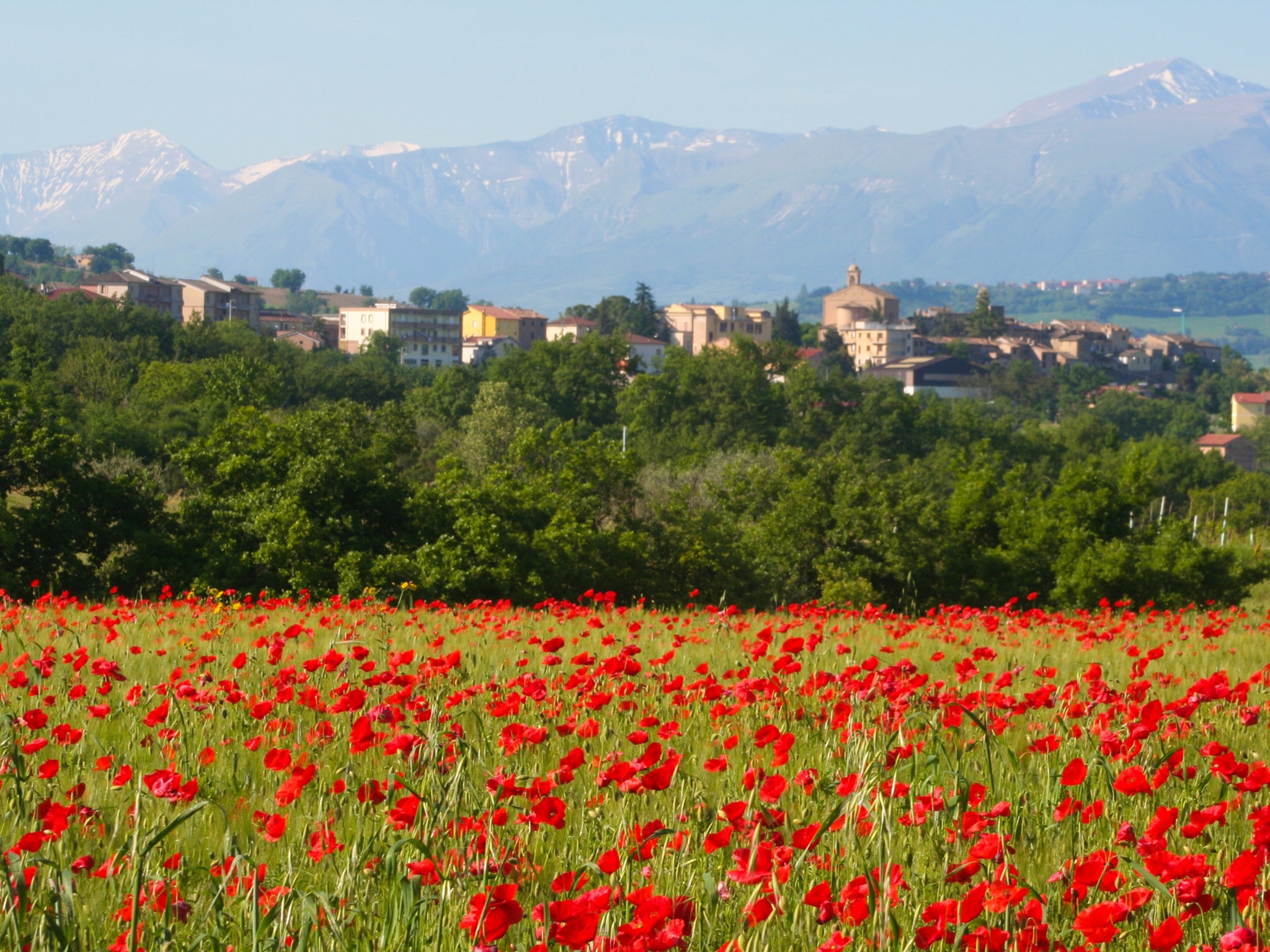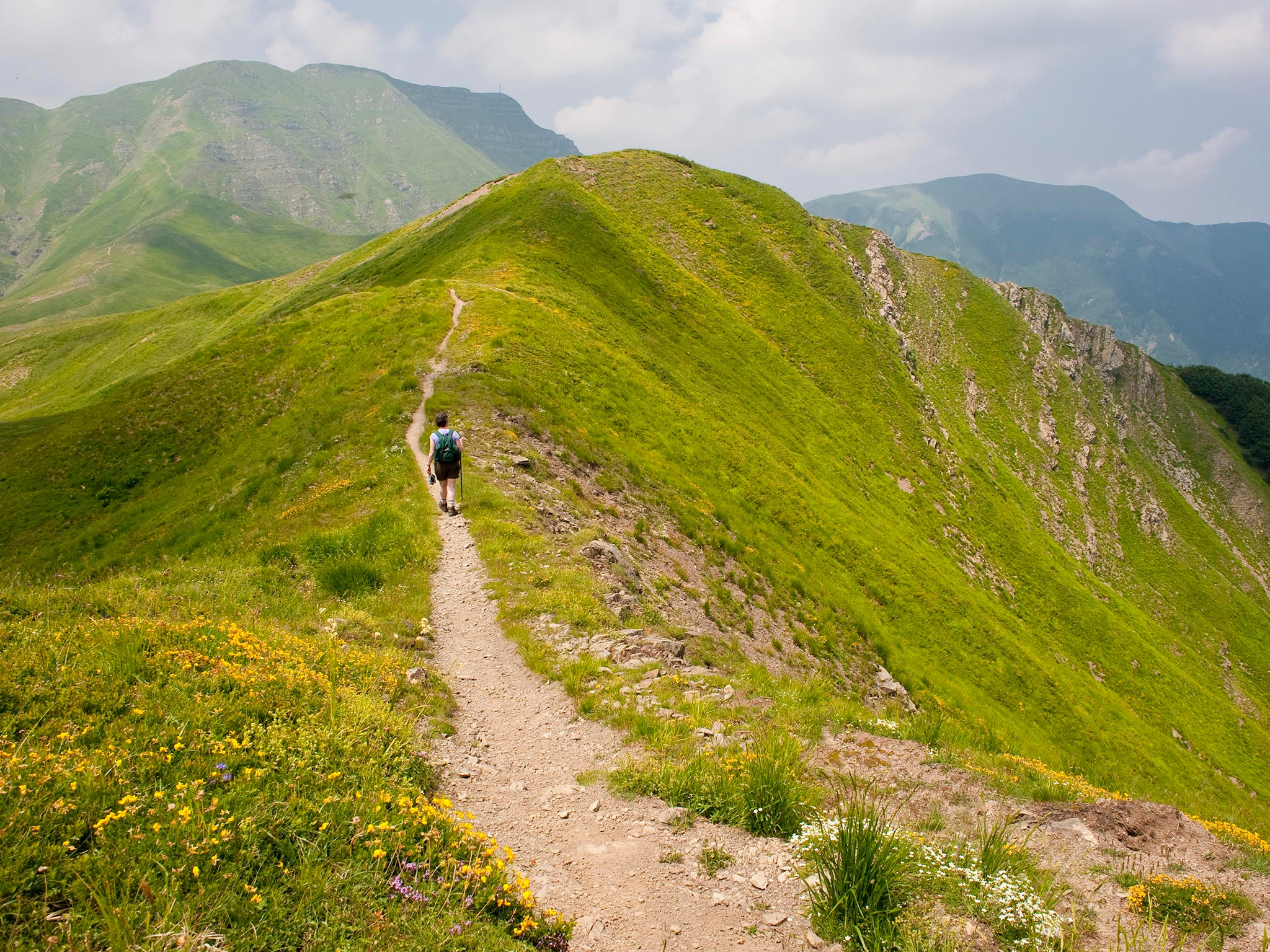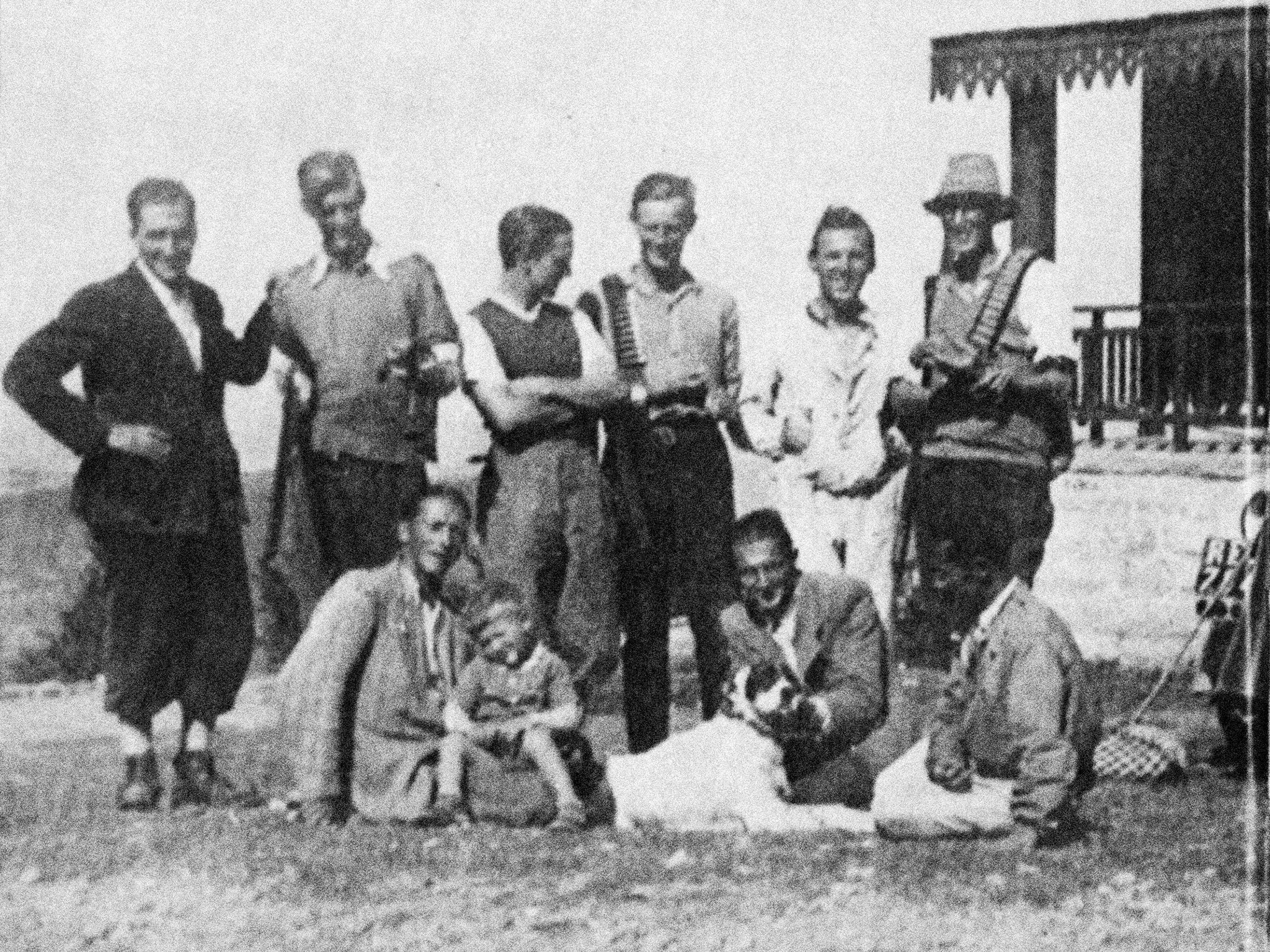The Independent's journalism is supported by our readers. When you purchase through links on our site, we may earn commission.
Apennines trip: Following my father's escape from an Italian prisoner of war camp
Along the deserted slopes of the Apennines, Gerard Gilbert traces the footsteps of his father, and other less fortunate Allied escapees

Your support helps us to tell the story
From reproductive rights to climate change to Big Tech, The Independent is on the ground when the story is developing. Whether it's investigating the financials of Elon Musk's pro-Trump PAC or producing our latest documentary, 'The A Word', which shines a light on the American women fighting for reproductive rights, we know how important it is to parse out the facts from the messaging.
At such a critical moment in US history, we need reporters on the ground. Your donation allows us to keep sending journalists to speak to both sides of the story.
The Independent is trusted by Americans across the entire political spectrum. And unlike many other quality news outlets, we choose not to lock Americans out of our reporting and analysis with paywalls. We believe quality journalism should be available to everyone, paid for by those who can afford it.
Your support makes all the difference.On the morning of 9 September 1943, my father and 500 other mainly British officers stepped through a hole obligingly cut in the barbed wire fence by their former captors at Fontanellato prisoner-of-war camp, near Parma in northern Italy. Their hosts, having deposed Mussolini two months earlier, had signed an armistice with the Allies, and the Germans were expected to take over the PoW camps at any moment; in fact they arrived at Fontanellato just five minutes after the mass exit had been completed.
Small bands of men made their way either north to the Swiss border, or south, where the Allied army was making painfully slow progress up the boot of Italy from Calabria. Three literary accounts emerged from among those who walked out of Fontanellato that sunny late summer’s day and chose the southerly route, heading for the Apennines, the 750-mile mountain range that forms the spine of Italy – the most famous being Eric Newby’s classic 1971 memoir, Love and War in the Apennines.
My father, Michael Gilbert, who went on at war’s end to become a probate lawyer and successful author of crime and mystery fiction, had shared the sick bay at Fontanellato with Newby (my father with a carbuncle under his armpit, Newby with a broken ankle) and used his experiences in his novel, The Long Journey Home.
His travelling companion, Tony Davies, penned a factual account, When the Moon Rises: An Escape Through Wartime Italy, and it was with this engaging account of their great escape that I travelled to the Apennines this summer.
According to Davies, he and my father had already tried one escape – recklessly (and I think I can speak for all his future offspring here) jumping out of the window of a moving train. Now, joined by a third escapee, Toby Graham, they put more thought into their plan: stick to the Apennines, stay clear of Germans and the more prosperous looking dwellings (more likely to be home to fascists), and search for dry lodging (usually in barns) and a hot meal from the local peasant farmers.

Davies’s tome contains the only photographic record of their epic journey – taken by cheery deserters from the Italian Alpini regiment who were forming a partisan band in the mountains – a group portrait with my sun-burnt and gaunt father, posing with one of the partisan’s guns and a belt of ammunition over his shoulder – grinning shyly at the camera.
The caption to the photograph says that it was taken near the summit of Monte Cimone, which I discovered to be in that part of the Apennines that separates Emilia-Romagna from Tuscany, or to put it another way – Rimini on the Adriatic from Livorno in the west, just where Field Marshal Albert Kesselring decided to make the German stand against the advancing Allies by constructing the so-called Gothic Line.
If the escapees had decided to hole up in 1943 and wait for the Allied armies to reach them – one of the possibilities they had discussed – they would have had to wait until the spring of 1945 before that finally happened. It’s highly unlikely they would have survived at liberty for so long.
Monte Belverdere, which is near Monte Cimone, formed one of the main citadels of the Gothic Line, and was taken by American ski troops of the 10th Mountain Division in late February 1945. A hike to the summit of Belverdere, where a memorial to this fierce battle was recently erected among the remains of German trenches and gun emplacements, is included in Inntravel’s “Quiet Mountains of the Apennines” package. The company offers daily walking itineraries between country inns, providing maps and packed lunch, while ferrying your luggage to the next hotel.
“Quiet” turned out to be something of an understatement; I didn’t pass another soul in three days of trudging along the (generally) well-marked paths. Walking in the Italian Dolomites, I am told, can be like trying to navigate a London Underground platform at rush-hour, but here in the Apennines the only living creatures I encountered were several roe deer, a bird of prey that might have been a type of eagle, and a big fat adder sunning itself on the road.
There also wolves, said Carla, Inntravel’s splendid rep – a bundle of energy who lives locally, seems to know everyone, and gets about on a Vespa. It was more the wolves’ domesticated cousins that concerned me, although most were chained up or fenced in. I could see why my father and his fellow escapees came to dread passing though hamlets and small villages, their arrival accompanied by a chorus of barking. Ironically they were adopted by a dog, which accompanied them for a large stretch of the journey, and which they dubbed – in case of emergency – Spare Rations.
I don’t mind solitary walking – in fact I mostly prefer it, as long as there is someone to chat to in the evening. The genius of Inntravel is that it has nurtured village hotels with hospitable owners, each linked by a day’s walking. I found myself meeting more or less the same people each evening, including two groups from a nation that my father and his fellow PoWs were desperate to avoid – Germans.

Each of the inns is run by owners who are also talented cooks. Giorgio at Il Foundaccio in Lizzario served the best tagliatelli alla bolognese (Bologna being an hour’s train journey away, and your airport of entry), as well as trout from a local fishery linked with the Slow Food movement, a now global food phenomenon born in Italy’s mountains.
The Antica Locanda Alpina in Pianaccio – run by two young sisters, Irene and Matilde, the fourth generation of the same family of owners – also subscribes to Slow Food, in this case the imaginative use of local chestnuts, whose trees cover the slopes around the hotel. They even serve chestnut beer, which had the right astringency to cut through the fattiness of the pork I was served (with chestnuts, naturally).
It was finer fare than that enjoyed by Davies, Graham, and my father as they traversed the hogsback of the Apennines, keeping to the high ridges. My final walk of the trip – a 10km hike to the summit of Corno alle Scale, the highest of the Bolognese-Apennine peaks – gave me a taste of what this might have felt like to hike along these so-called saddles. Clouds whipped by as I made my way along a narrow path to the iron cross atop the Corno, but not densely enough to obscure the 360-degree view from the top.
The scenery wasn’t at the forefront of the escapees’ minds in 1943, and wasn’t their predominant memory either – that being the extraordinary generosity of the local peasants, who had so little but gave so much. This sometimes came at an unimaginable price, and Davies’s book ends with a horrifying and sobering postscript.
He returned to the Apennines in the late 1960s, to stay with Eric Newby and his wife, Wanda – a local girl Newby had met during his escape – and to help with picking their grapes for the wine harvest. Newby introduced Davies to a fellow grape-picker, a woman aged about 40, who had been 14 when her family sheltered and fed three Englishmen travelling with a dog. A German patrol had passed through some days later and somebody in their village had blabbed to the soldiers about what had happened; the girl’s parents and two brothers were then shot dead in front of her. Davies asked the woman whether she recognised him, but she said she didn’t.
By the end of October 1943, Davies, Graham and my father, joined a South African called Hans Becker, made it to the front line – the most dangerous part of their journey. Becker was shot dead attempting to cross the valley that formed the line, Davies was wounded and re-captured, while my father and Graham made it to safety. Back at my hotel that evening it was one of the Germans’ 50th birthday. He was a carpenter from Dusseldorf called Hans, and we raised a glass to his health. War and peace, as someone once wrote.
Travel essentials
Getting there
Gerard Gilbert travelled with Inntravel (01653 6170001; inntravel.co.uk) on its “Quiet Mountains of the Apennines” trip. The self-guided, four-night itinerary costs from £415pp, including transfers from Bologna, accommodation with breakfast and dinner, luggage transfers, picnic lunches, route notes, and maps. Flights not included.
The closest airport is Bologna, served by Ryanair (0871 246 0000; ryanair.com) from Stansted, Bristol, Edinburgh, and Manchester; British Airways (0344 493 0787; ba.com) from Heathrow, and easyJet (0843 104 5000; easyJet.com) from Gatwick.
More information
Join our commenting forum
Join thought-provoking conversations, follow other Independent readers and see their replies
Comments